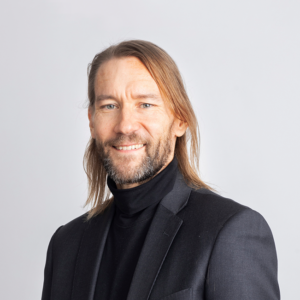
The killing of Abu Bakr Al-Baghdadi last year put the jihadist nexus in North-Western Syria back in the spotlight. The faltering of Idlib’s de-escalation zone is currently increasing the risk of a direct military confrontation between Turkish-controlled forces and the Syrian and Russian militaries, reigniting the geopolitical component of the conflict.
Following Vladimir Putin’s last visit to Damascus in early January, the regime’s forces continued their offensive to retake the last major opposition stronghold, Idlib, which is mostly under jihadist control. The North-Western province had originally been an important centre of civilian uprisings against the Bashar al-Assad regime in 2011, witnessing the emergence of citizen journalists.
However, besides some Free Syrian Army (FSA) formations, the area was incrementally overrun by Jabhat an-Nusra (JAN) and other Al-Qaida-affiliated factions, such as the ‘Turkestan Islamic Party’ militia. In addition to these jihadist fighting groups, other fighters found their way to Idlib as a result of the Assad regime consolidating its territorial control over other resistance pockets since 2015, putting their numbers at well over 50,000. As a consequence, the security landscape became highly fragmented along ultra-radical ideological fault lines, despite the efforts of these non-state armed actors to establish a semblance of governance.
In addition to the decisive influx of fighters, the region experienced a massive inward flow of IDPs (internally displaced persons) from various parts of Syria, escaping warfare and seeking refuge. This led to the establishment of several large-scale tent cities (Atmeh, etc.) adjacent to the Turkish border, where several hundred thousands are currently living. These two developments contributed to a significant change in Idlib’s demographic structure, which is now experiencing another reconfiguration.
In September 2018 a de-escalation zone was set up on Idlib’s provincial borders, with the purpose of freezing the conflict between the Assad regime and the armed opposition. For this purpose, a demilitarised stretch of territory is guarded by a series of Turkish and Russian observation posts. On the Idlib side of this corridor, Turkey has made huge efforts in recent years to build up a surrogate army, composed of FSA remnants and a host of jihadist militias. This so-called Syrian National Army (SNA) is composed of around thirty fighting units that include hardline jihadist factions such as Ahrar al-Sham, Faylaq al-Sham and Jaysh al-Islam. Whereas JAN remained separate, it rebranded itself as Hay’at Tahrir al-Sham (HTS). On the regime-controlled side, Hezbollah fighters and an Iranian presence including Afghan fighting units complement the Russian forces.
According to the 2018 bilateral Sochi agreement between Moscow and Ankara, the Turks were requested to disarm the fighting factions under their control. Instead of implementing this demand, Turkey followed a unification strategy that resulted in the building of an umbrella organisation for Turkish proxies (the SNA). Under this arrangement, Russia was obliged to hold back ‘Syria’s Arab Army’ (SAA), which it was willing to do until last summer, when Assad launched the offensive to take back the last pocket of military resistance. Accordingly, the logic of the buffer zone is now dysfunctional, and a number of Turkish observation points, have been surrounded by the regime’s armed forces.
Recep Tayyip Erdoğan’s motivation to get involved in Idlib and to seek an arrangement with Russia is still driven by stemming the flow of additional refugees into Turkey and controlling the various jihadist proxies, not least for domestic security reasons. Due to the Assad regime’s current military offensive, this Turkish containment strategy has come under enormous pressure. Therefore, Ankara is compelled to reach a new understanding with Moscow on the future of Idlib. The announcement of the Istanbul summit on 5 March, gathering together Germany, France, Turkey and Russia, could be a first step in this direction, as any change to the status quo implies potential downsides for Ankara.
The current military campaign allowed the regime to retake the strategic M5 highway and it is now advancing to retake the M4 highway, eventually allowing the Alevite heartlands in Latakiyeh to be reconnected with the (former) economic hub of Aleppo. However, the topography in North-Western Idlib is more mountainous, which explains why two plausible scenarios are emerging in the current setting.
The first would be a containment strategy, which is a minimum compromise that Turkey might be prepared to settle for with Damascus and Moscow. Technically not a conflict resolution, it would buy time in lieu of a long-term settlement, further delaying the cost Ankara will have to confront one way or another for having supported an Afghanistan-style jihadist insurgency for regime change in a neighbouring country.
Alternatively, an SAA-led full recapture of Idlib could either lead to a physical defeat of the jihadi proxies or to a negotiated settlement. The latter could entail a DDR process: disarming, demobilising and reintegrating the armed insurgency. Assuming that the jihadists will not be willing to acknowledge defeat, the feasibility of this option remains dubious, however. Nevertheless, the declared goal of the regime to re-establish the territorial integrity of the Syrian state is tantamount to imposing an authoritarian peace.
Whereas Ankara’s primary interest lies in keeping Idlib’s status quo in place, this clashes with Damascus’s strategic goal of regaining its territory. However, a compromise could be found regarding the area between the Turkish border and the two Syrian highways (M5, M4). This could tie in with Russia’s ambition to maintain the alliance with Damascus, while managing a mutually beneficial relationship with Ankara. While this compromise corresponds with the EU’s interest in keeping refugees at bay and jihadists away, for political and security reasons, it would run counter to its wish to drive a wedge between the Russia-Turkey rapprochement.
















